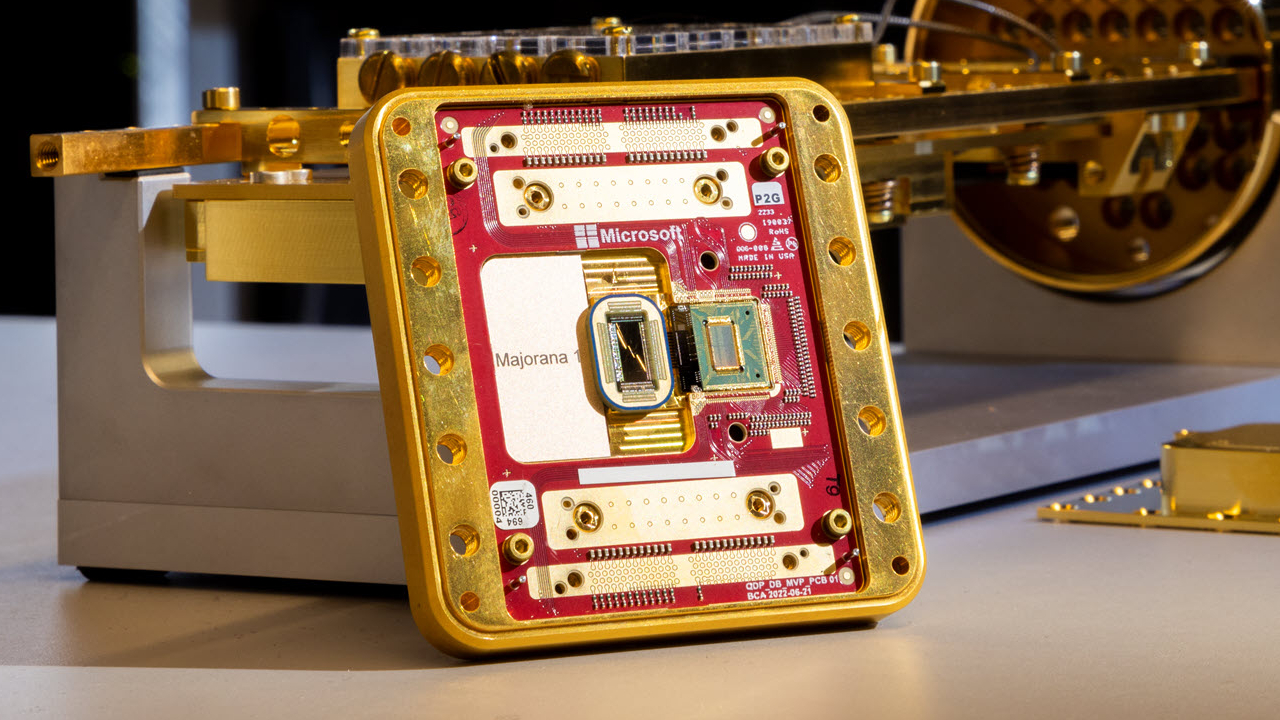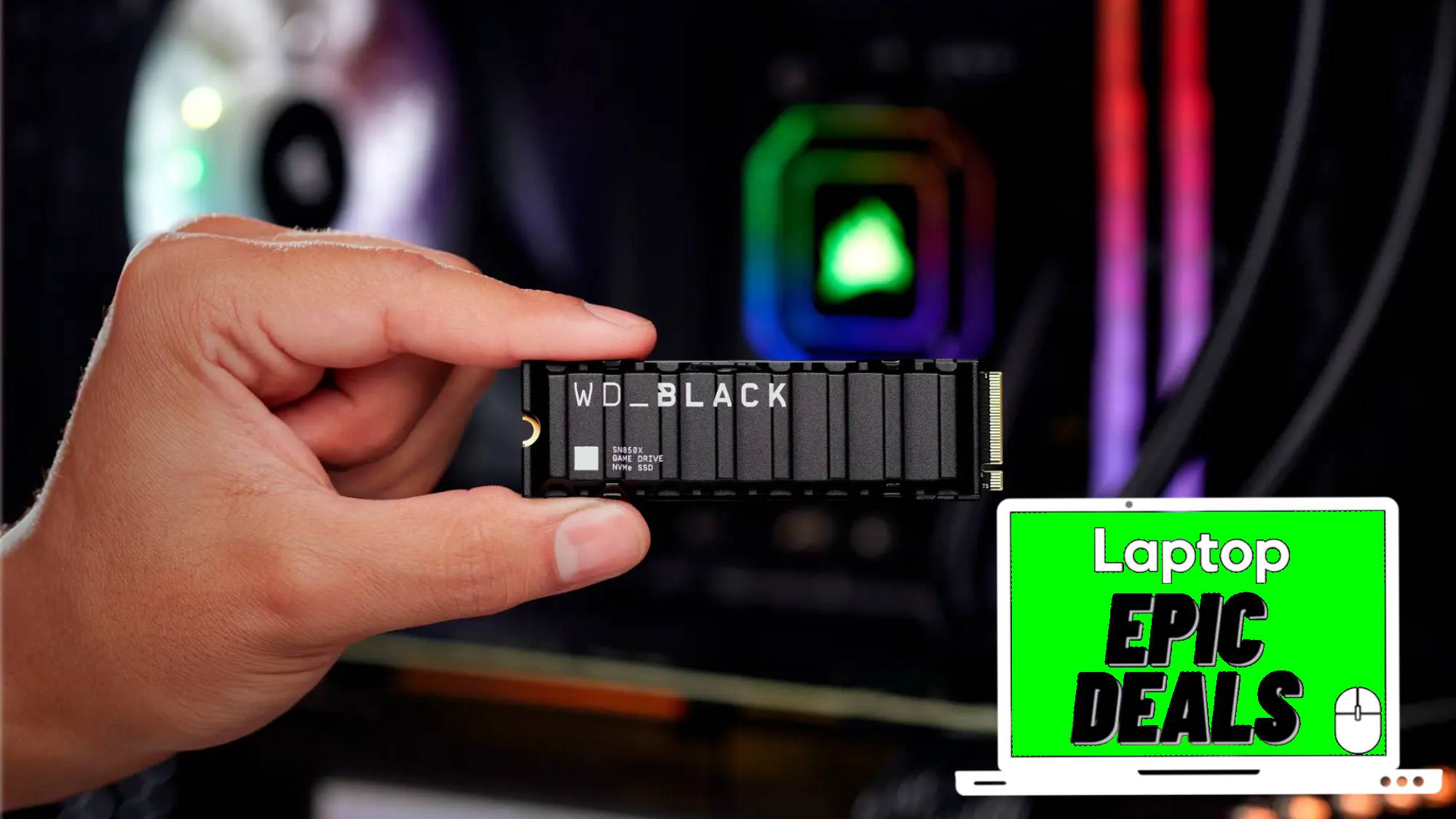Microsoft's Majorana 1 breaks the quantum computing barrier — and my brain
Microsoft has built a quantum processor using quasi particles that barely exist to power quantum computers you can't have, and all I got was this lousy headache.

It seems like only last week that the most complex computing mysteries in my life were which emojis will remain socially acceptable in 2025 and how to decipher the Windings font.
However, Microsoft has well and truly thrown a wrench into the works after announcing its Majorana 1 quantum computing chip on Wednesday. This leaves me with the unenviable task of somehow bringing this groundbreaking news to you without sending both of our heads blasting away from our bodies like a space-bound shuttlecraft for the super-wealthy. Strap in.
Microsoft's Majorana 1 quantum processor is the world's first to be built on a "topological core architecture," using a new topoconductor material to host Majorana particles that serve as the building blocks for creating topological qubits that are resistant to noise and error that leads to incorrect calculations.
Is your head hurting, or just mine?
Putting it simply: is Microsoft's Majorana 1 chip a big deal? Yes, it is. Is it fast? Very. Does it matter to the average consumer? Not right now. Can I explain quantum computing to you in more depth, anyway? I was hoping you wouldn't ask, but I'll try my best.
Quantum computing 101: We're not in Kansas anymore
Confidence in whatever intelligence I possess has been sent reeling by news of Microsoft's new Majorana 1 quantum chip. I've lost count of the number of times I've Googled "Explain quantum computing to me like I'm 5" over the last few days.
Each time being met by walls of incoherent (to me, at least) science babble that either misses the point of my phrasing or paints every kindergartener as some Doogie Howser, M.D.-level (or Doogie Kameāloha, M.D., for those of you who's birth year begins with a 2) child prodigy of the sciences.
Stay in the know with Laptop Mag
Get our in-depth reviews, helpful tips, great deals, and the biggest news stories delivered to your inbox.
However, from one quantum layperson to another, this is how I'd best describe it: If a modern computer uses bits as its smallest unit of data (represented by either 1 or 0), like a light switch — which can be set to either on (1) or off (0) — a quantum computer uses a qubit, which is more akin to a dimmer switch — able to be on (1), off (0), or anywhere between the two.
Somewhat pouring gasoline onto this analogy, a qubit can be in every possible position at the same time thanks to superpositioning — allowing it to perform calculations on multiple possibilities simultaneously, making it significantly more powerful and faster than a regular bit.
How much more powerful? Let's look at another quantum chip as an example.
In December, Google announced its own quantum processor, Willow, able to perform a computation using the random circuit sampling (RCS) benchmark for quantum computers in under 5 minutes.
Without context, that means next to naught. However, compared to Willow, today's fastest supercomputers would take 10 septillion (10^24) years to perform the same task.
What's a septillion? That's a 10 followed by twenty-four zeroes, presenting a timescale so large it eclipses the estimated age of the universe (13.7 billion years) by a factor of 729 trillion.
Google's Willow features only 105 qubits. The design of Microsoft's Majorana 1 quantum processor can theoretically pack up to a million qubits when scaled up, catapulting the company to the forefront of quantum computing.
So, quantum computers are fast. Really fast. Then again, that's how every computer feels before you install Google Chrome. We've yet to know how Willow or Microsoft's Majorana 1 chip would react to the RAM-hungry beast of modern computing.
It's the future, but wake me up when it can play DOOM
Sadly, those of you salivating at the mouth over thoughts of how well a Surface Laptop could perform with a Majorana 1 chip housed inside have some years to wait before quantum computing goes mainstream.
Instead, computers like those Majorana 1 will power are locked away inside sterile and cold lab environments, tasked with solving very particular niche problems and simulations.
In fact, one of the primary tasks of Microsoft's Majorana 1 chip will be to help Microsoft refine the design of a better Majorana quantum chip, ready to scale up to its million qubit potential in a matter of years, not decades.
Microsoft technical fellow Krysta Svore describes the creation of the Majorana 1's indium arsenide topoconductor as done atom by atom, highlighting, "understanding these materials is incredibly hard. With a scaled quantum computer, we will be able to predict materials with even better properties for building the next generation of quantum computers beyond scale."
So, while it is an exciting development, nobody will be bragging about Cyberpunk 2077 performance on the Majorana 1 any time soon. The Majorana 1 is the chip before the chip, before the chip that changes personal computing entirely. However, with quantum processors like the Majorana 1 now offering a helping hand, the quantum age of computing could be the closest it's ever been.
More from Laptop Mag
- AMD Ryzen Strix Halo outperforms RTX 4070 laptop GPU in several benchmarks — is the iGPU making a comeback?
- Is Moore's Law dead? We spoke to Intel, AMD, Nvidia, and Qualcomm, and both sides of the debate agree: The only constant is progress
- “AI is dramatically reshaping many industries, including gaming”: Nvidia’s Jesse Clayton muses on the AI-powered future of gaming

Rael Hornby, potentially influenced by far too many LucasArts titles at an early age, once thought he’d grow up to be a mighty pirate. However, after several interventions with close friends and family members, you’re now much more likely to see his name attached to the bylines of tech articles. While not maintaining a double life as an aspiring writer by day and indie game dev by night, you’ll find him sat in a corner somewhere muttering to himself about microtransactions or hunting down promising indie games on Twitter.
You must confirm your public display name before commenting
Please logout and then login again, you will then be prompted to enter your display name.

